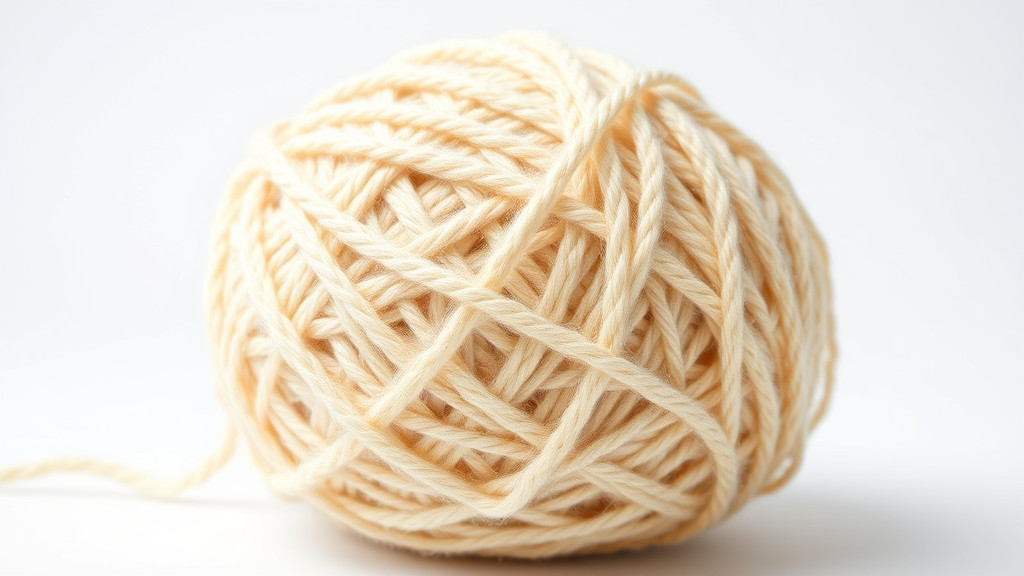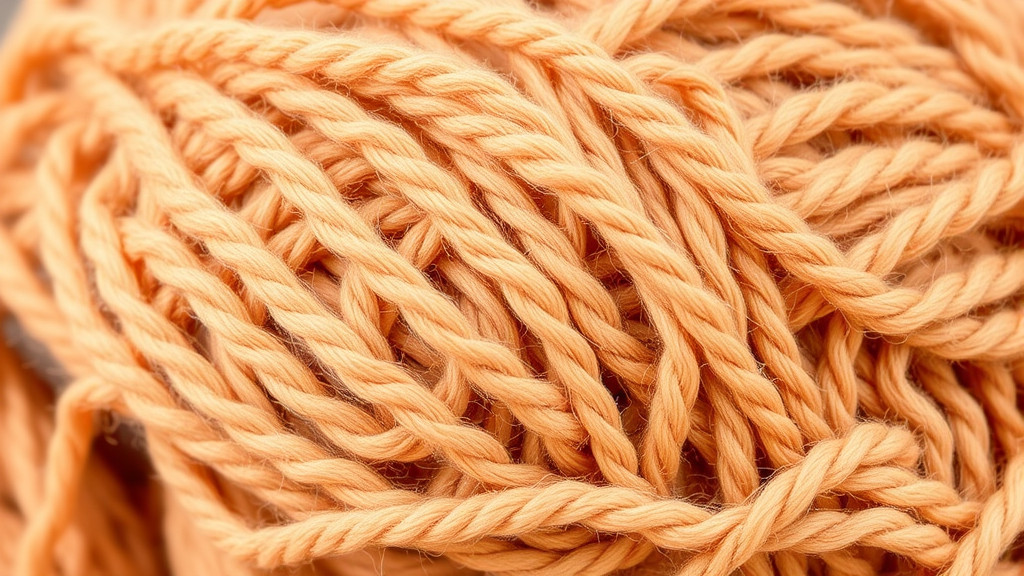Double covered yarn has become an increasingly popular choice among crafters due to its unique texture and versatility. This type of yarn consists of a core strand that is wrapped in two layers of softer fibers, providing both strength and a delightful tactile experience. By understanding the intricacies of double covered yarn, you can elevate your knitting and crochet projects to new heights, achieving beautiful results with ease. In this guide, we will explore various techniques, tips, and tricks for working with double covered yarn effectively.
Understanding Double Covered Yarn

Before diving into the techniques, it’s essential to understand the nature of double covered yarn. This yarn type comes in different materials, including wool, cotton, and synthetic fibers, each offering distinct properties. The composition of the core and the outer layers greatly affects the final product’s look and feel.
What Sets Double Covered Yarn Apart?
Double covered yarn stands out because of its structure, which combines the durability of a strong core with the softness of surrounding fibers.
This combination provides several advantages:
- Durability: The central core adds resilience, making it less susceptible to wear and tear.
- Texture: The soft outer layers create a plush feel that enhances the overall aesthetic of the finished item.
- Versatility: Suitable for various projects, from garments to accessories, double covered yarn adapts well to numerous patterns and stitches.
These characteristics make double covered yarn a favorite for many knitters and crocheters who value both functionality and comfort in their creations.
Choosing the Right Type of Double Covered Yarn
When selecting double covered yarn, consider the material and weight. Different fibers offer varying degrees of warmth, elasticity, and washability. For example, if you’re creating a cozy blanket, a wool blend may be the best option for its insulating properties.
Conversely, if you’re crafting a summer garment, a cotton-based double covered yarn would provide breathability and comfort. Additionally, pay attention to the weight of the yarn; lighter weights are ideal for delicate projects, while heavier options work better for sturdy items.
Factors Influencing Your Choice
Several factors come into play when choosing the right double covered yarn for your project. These include:
- Project Purpose: Consider the intended use of the finished item. Will it be worn close to the skin? Is it for decorative purposes?
- Color and Dye Lot: Double covered yarn often comes in stunning colors, but it’s crucial to check dye lots to ensure uniformity across your project.
- Budget: Assess your budget, as different types of double covered yarn can vary significantly in price.
By carefully considering these elements, you’ll set yourself up for success when working with double covered yarn.
Techniques for Knitting with Double Covered Yarn
Knitting with double covered yarn can be a pleasurable experience, especially if you leverage the right techniques. This section will cover various methods that enhance your knitting journey, ensuring you achieve outstanding results.
Preparing Your Yarn
Before casting on, it’s important to prepare your double covered yarn properly.
Start by unwinding the skein carefully to avoid tangles. If your yarn is particularly twisty, allowing it to relax in a bowl or basket can help minimize stress on the fibers.
As you work, regularly check for any knots or inconsistencies in the yarn that could affect your project. By taking the time to prep your yarn, you’ll enjoy a smoother knitting process, leading to more satisfying results.
Selecting the Right Needles
Choosing the appropriate knitting needles is critical when working with double covered yarn.
The yarn’s thickness will dictate the size of the needles you should use. Generally, larger needles work well for bulky yarns, while smaller ones are suitable for finer strands.
Consider your knitting style as well. If you tend to knit tightly, you may want to go up a needle size to accommodate the yarn’s structure. Alternatively, if you have a looser tension, stick with the recommended size to maintain the integrity of your project.
Experimenting with Different Stitches
Double covered yarn responds beautifully to various stitch techniques.
Whether you prefer garter stitch, stockinette, or intricate lace patterns, this yarn will showcase your creativity.
Experimenting with different stitches can lead to unexpected textures and effects. For instance, using a slip stitch pattern can enhance the yarn’s depth, while cable stitches add sophistication to your project.
Don’t shy away from trying new techniques! The adaptability of double covered yarn allows you to explore without fear.
Understanding Tension and Gauge
Maintaining consistent tension is vital when working with double covered yarn.
Because of its unique structure, this type of yarn may behave differently than traditional yarns. Take the time to swatch before starting your main project to gauge how the yarn responds to your knitting style.
Pay attention to how tightly or loosely the yarn wraps around your needles. A loose grip may lead to uneven stitches, while too much tension can cause the fabric to pucker. By monitoring your tension, you’ll produce a polished, professional-looking finish.
Mastering Crochet Techniques with Double Covered Yarn
Crocheting with double covered yarn opens up a world of possibilities, allowing you to create stunning designs with ease. This section will explore techniques specifically tailored for crochet enthusiasts.
Understanding Crochet Hooks
Selecting the right crochet hook is crucial when working with double covered yarn.
Just like with knitting needles, the hook size you choose will depend on the weight of the yarn.
A larger hook will create a looser fabric, while a smaller hook will yield denser stitches. You may also want to consider the shape of the hook; for example, a tulip-shaped hook can help prevent splitting the yarn as you work.
Mastering Basic Crochet Stitches
Double covered yarn lends itself well to various crochet stitches, from simple chains to complex motifs.
Start with basic stitches such as single crochet and double crochet to familiarize yourself with the yarn’s behavior.
Once you’ve mastered these foundational stitches, experiment with more intricate techniques like shell stitches or clusters to add visual interest to your projects.
Each stitch reveals a new aspect of the yarn, enhancing your understanding of how to manipulate it effectively.
Exploring Colorwork Techniques
One of the most exciting aspects of working with double covered yarn is the opportunity for colorwork.
Combining multiple shades can create stunning gradients and patterns that elevate your designs.
Techniques like tapestry crochet or fair isle can introduce dynamic color combinations that catch the eye.
Be mindful of the weight of your yarn when blending colors; balancing contrasting hues can enhance your project’s overall impact and cohesion.
Finishing Techniques for a Professional Look
Finishing touches can make all the difference in your crochet projects.
When working with double covered yarn, take care in weaving in ends and blocking your pieces.
Properly securing your yarn tails prevents unraveling, while blocking helps to even out stitches and enhances the overall appearance of your work.
Incorporating these finishing techniques will give your creations a polished, professional look that showcases your skills.
Care and Maintenance of Finished Projects
Once you’ve completed your project with double covered yarn, proper care is essential to maintain its beauty and longevity. Here, we’ll discuss the best practices for caring for your creations.
Washing and Drying Guidelines
Double covered yarn varies in care requirements based on the fiber content.
Always refer to the manufacturer’s label for specific washing instructions. In general, hand washing in cool water with a gentle detergent is safest for maintaining the integrity of the fibers.
Avoid wringing or twisting the fabric, as this can distort its shape. Instead, gently press out excess water and lay the item flat to dry.
If machine washing is acceptable, opt for a cold cycle and place your item in a mesh bag to protect it.
Storing Your Creations
Proper storage is key to prolonging the life of your finished projects.
Store items made from double covered yarn in a cool, dry place away from direct sunlight to prevent fading.
Using breathable bags or containers helps maintain the yarn’s structure while keeping dust and pests at bay. Additionally, avoid folding heavy items, as this can lead to creases or misshaping over time.
Repairing Worn Items
Over time, even the most cherished creations may require some TLC.
Learning basic repair techniques allows you to extend the life of your double covered yarn items.
For small holes or frays, duplicate stitch or embroidery can seamlessly mend the area.
If you notice excessive pilling, using a fabric shaver can help restore the item’s original texture.
Seasonal Considerations
Certain seasons can impact the care of your double covered yarn items.
During warmer months, ensure that your projects remain stored in a climate-controlled environment to prevent mold or mildew.
In colder seasons, be cautious of exposure to elements such as snow or rain, as moisture can damage the fibers.
By staying mindful of seasonal influences, you can maintain the beauty and functionality of your creations throughout the year.
Conclusion

Working with double covered yarn can open up a whole new realm of creative possibilities in your knitting and crochet endeavors. Its unique structure, combining strength and softness, makes it an appealing choice for a variety of projects. By mastering the techniques discussed in this guide, you’ll not only enhance your crafting skills but also bring your artistic visions to life. Embrace the joy of experimenting with different stitches, colors, and finishes, and let the beauty of double covered yarn inspire your next masterpiece. As you continue your journey with this versatile material, remember that practice and patience will yield incredible rewards in your crafting adventures.
Address: Thanh Hoa Hamlet, Thanh Dien Commune, Chau Thanh District, Tay Ninh Province, Vietnam
Mobile/whatsap: (+84) 984.841.239
Mail: sale@tanithread.com
Website:https://tanithread.com/



